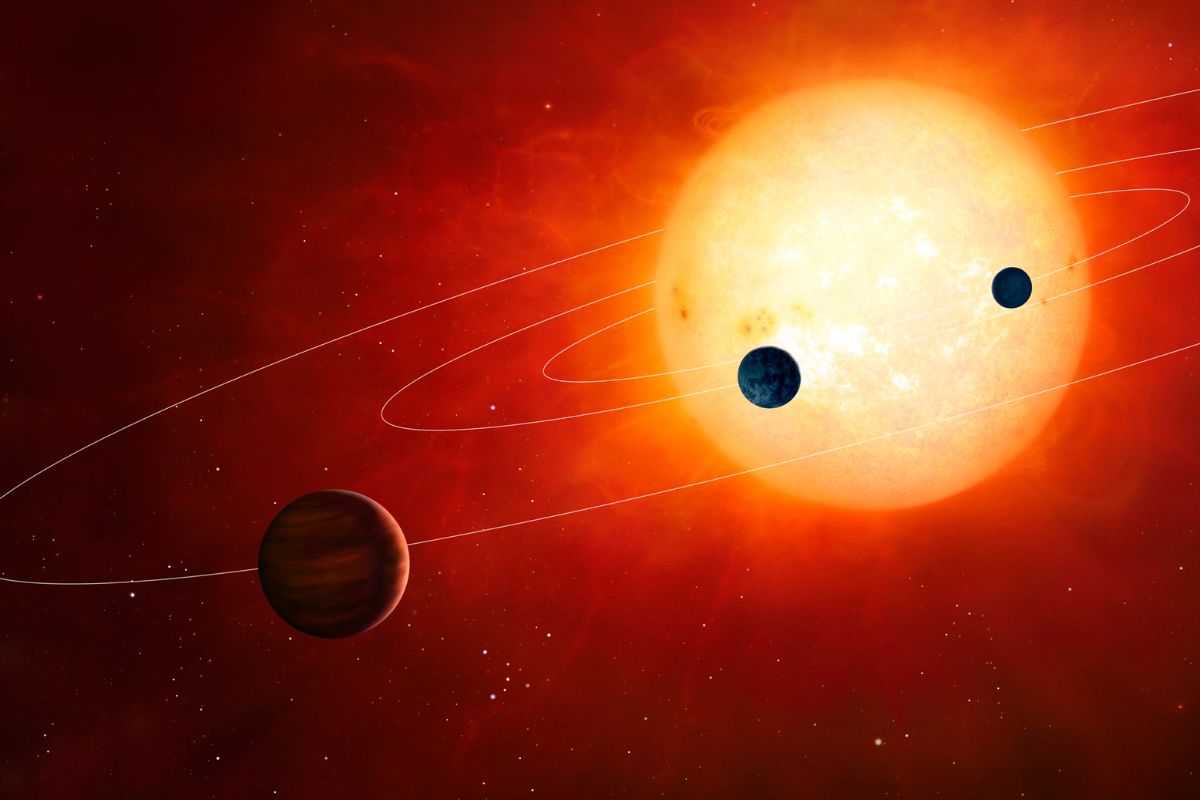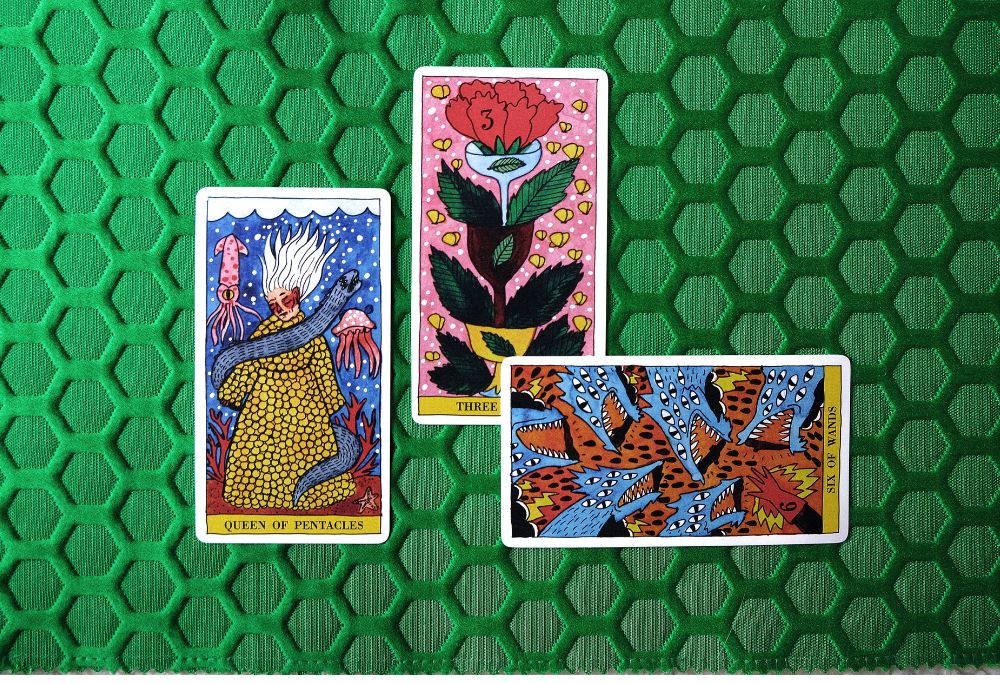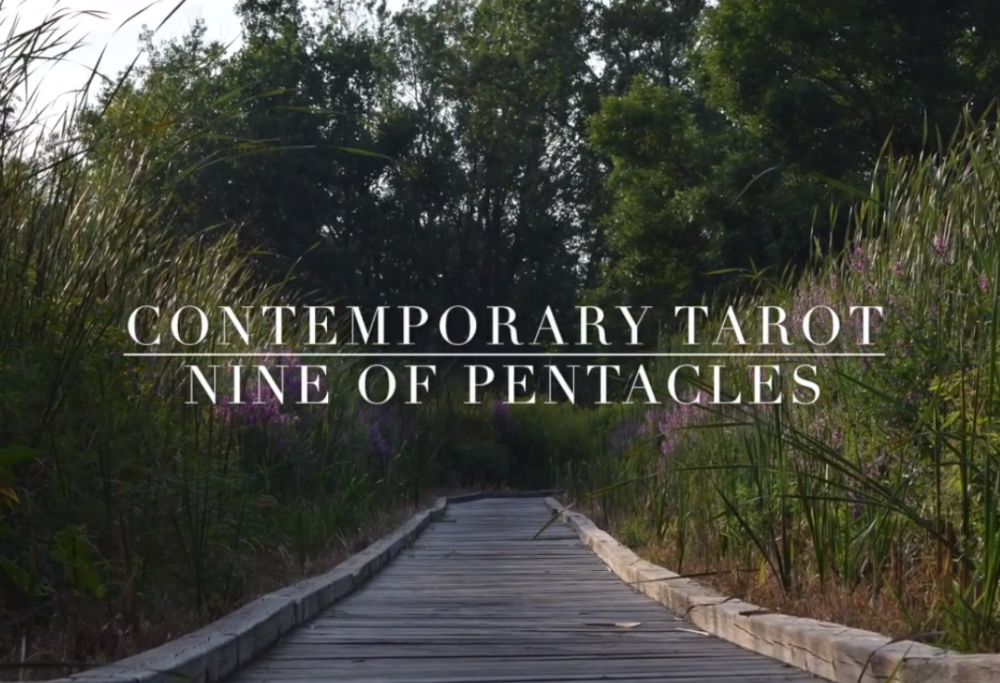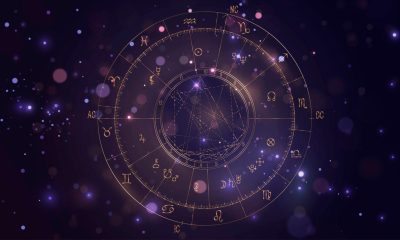Astrology
The Role of Planetary Transits in Astrology: What They Mean and How to Interpret Them

Astrology has been revered for centuries as a means of understanding ourselves and our place in the universe. One of the most intriguing aspects of this ancient art is the study of planetary transits in astrology. But what exactly are planetary transits in astrology, and how can we use them to gain insight into our lives? By examining the movements of the planets in relation to our natal charts, we can unlock a wealth of information about our past, present, and future. In this blog post, we will explore the role of planetary transits in astrology, and how to interpret them for a deeper understanding of our inner selves and the world around us.
Introduction to Planetary Transits in Astrology
Planetary transits in astrology refer to the movement of planets through the 12 houses of a horoscope, which can impact our lives in various ways. Transits work at multiple levels, influencing our mental state, actions, and outcomes, and can affect health, wealth, relationships, and prosperity. The results of transits cannot be generalized since the movement of planets into one house can have different effects on different individuals.
Understanding planetary transits in astrology is critical since they have a say in about 25% of how Dasha’s fruits will be delivered to us and can also control our state of mind and happiness index. Planetary transits also influence our natal chart and have a massive role to play in our destiny. Our destiny is an interplay between fixed and movable forces, and transits impact our minds, actions, and outcomes. As author Steven Forrest said, “The planets are like teachers of the soul, each with its own contribution to make to our growth.”
Understanding the Concept of Transit
Trans are movements of planets across natal planets or their positions in a horoscope chart. They are an important concept in astrology because they can influence feelings, moods, and habits on a day-to-day basis. Transiting planets are classified into two groups: inner planets (Mercury, Venus, Mars, and the Sun) which move quickly through the zodiac and affect day-to-day life, and outer planets (Jupiter, Saturn, Uranus, Neptune, and Pluto) which move slowly, shaping bigger trends in life. Neptune, Uranus, and Pluto orbit the sun very slowly, so they shape entire generations.
A transit chart captures planets in motion on any given day, while a natal chart represents a freeze frame of the positions of the planets at birth. When transiting planets are over the same zodiac point as natal planets, they activate them and the two energies combine. Tracking transits is indispensable in understanding how planets affect daily life.
Impact of Planetary Movements on Natal Chart
The impact of planetary transits in astrology movements on your natal chart can be significant, as these transits bring your chart to life in the present moment. According to astrology expert Tripp, transits occur when a planet moves across your natal planets or planets’ positions at the time of your birth. This influence can prompt a change in your energy, mood, and behavior.
The influence of each planet differs, with slower-moving planets such as Uranus, Neptune, and Pluto bringing longer-lasting effects. In contrast, inner planets like the moon, sun, Mercury, Venus, and Mars move through the signs relatively quickly, resulting in shorter transits. Keeping track of your transits is crucial to understanding how the planets affect your daily life. Look up an ephemeris or consult an astrologer to determine when significant transits are likely to occur.
What Is the Duration of Transits?
Trans are an essential component in astrology and understanding their duration is crucial in interpreting their effects. According to astrologer Tripp, transits occur when a planet moves across your natal planets or the planets’ positions in your birth chart. The duration of transit varies depending on the speed of the planet. The inner planets, including the Moon, Sun, Mercury, Venus, and Mars move through the signs relatively quickly, so their transits and effects are on the shorter side.
On the other hand, a slow-moving planet like Jupiter, Saturn, Uranus, Neptune, or Pluto takes much longer to transit a natal placement, causing more prolonged effects. Tripp suggests that keeping track of transits is fundamental in understanding how planets affect daily life. You can find out about transits ahead of time by looking up ephemeris or a table listing all of the planet’s movements in the upcoming months and years.
How to Identify Your Transits?
To identify your planetary transits in astrology, you need to generate your natal chart and then compare it to the planetary positions for a given time. There are several websites available to generate your chart, such as astro.com. Once you have created your guest profile and inserted your birth details, select “Natal chart and transits” as your chart type and put in the start date for the transit you want to check. Then select “Whole Signs” as your house system and generate your chart.
The planets inside the circle represent your natal chart, while the planets outside the circle represent the transits. Keep in mind that transits occur when a planet moves across your natal planets or the planets’ positions in your chart. It’s important to track your transits to understand how planetary transits in astrology positions affect your daily life, and you can find out about transits ahead of time by looking at ephemeris or a table listing all of the planet’s movements for upcoming months and years.
Using Ephemeris to Predict Transit
The use of an ephemeris is a useful tool in predicting planetary transits in astrology. An ephemeris is a table that lists the daily positions of the planets and allows us to determine when planets will have a specific transit. This is especially helpful for predicting planetary returns or when a planet’s position will be the same as where it was at your birth. It’s important to note that different planets behave differently, with the slower-moving planets like Neptune and Pluto taking years to complete a transit while faster-moving planets like Venus and Mars only transit for a matter of days.
Therefore, it’s more effective to track which planets are currently transiting over which parts of your chart rather than the specific planetary transits in astrology aspects they are making to the natal chart. Investing in an ephemeris or downloading one online can provide insight into upcoming transits and help you plan accordingly. As astrologer Yasmin Boland notes, “Transits bring your chart alive in the here and now and allow you to tap into the coming days, weeks, and years.”
The Significance of Uranus, Neptune, and Pluto Transits
In Indian and Western astrology, Uranus, Neptune, and Pluto are considered to be the outermost planets in our solar system, and their transits are believed to have a significant impact on human destiny. Uranus signifies intelligence, research, technological advancement, and progress while also emphasizing originality, individuality, and tradition. Neptune represents intuition and triggers extraordinary events in life, along with creativity, research, financial markets, and overseas businesses. Pluto, the planet of destruction, signifies transformation, rebirth, and renewal and relates to underworld activities, scandals, and political issues.
Astrology recognizes the predictive and guiding role of these three outer planets and their effects on human lives, shaping personalities, and influencing collective energy levels, mental patterns, romantic energy, and sense of hope and growth. Uranus, Neptune, and Pluto transits continue to evolve humanity, for better or worse, and inspire astrologers and enthusiasts to study and interpret their future effects.
Planetary Transits in Astrology
Astrology, the study of the planets and their movements in the sky has been around for centuries. One important aspect of astrology is understanding planetary transits in astrology. These transits occur as planets move through the zodiac signs and form unique angles with each other, creating energetic conversations that influence our lives. As astrologer, Chani Nicholas explains, “Each planet represents an energetic force within us or a component of life.”
Understanding the planetary aspects and how they play out in our birth charts can provide insight into our strengths, weaknesses, and opportunities for growth. It is important to note that astrology does not predict the future but rather reveals possible paths and trends to make more informed decisions. Studying planetary transits in astrology can enhance and enrich your daily astrology practice and provide a deeper understanding and awareness of your life.
Understanding Uranus Transit and its Impact on Your Life
As one of the outer planets, Uranus’ transit brings sudden and unexpected changes to your life, encouraging you to break free from outdated patterns and restrictions. This transit typically lasts for around 7 years and occurs once every 84 years, making it a rare and transformative experience.
During this period, you may experience upheavals in areas such as relationships, career, and personal beliefs, leading to greater freedom and self-expression. Uranus’ influence on your birth chart can also indicate a need for innovation, rebellion, and individuality.
As astrologer, Liz Greene notes: “Uranus transits are the cosmic way of telling us that it’s time to wake up and shake things up.” This transit may initially be disruptive, but it can ultimately lead to personal growth and greater authenticity.
To navigate Uranus’ influence on your life, focus on embracing change and staying open to new possibilities. Use this time to explore your passions and interests, connect with like-minded individuals, and embrace the unconventional.
So, if you want to make the most of this rare transit, take this opportunity to break free from old patterns, be daring, and embrace your unique individuality.
Neptune Transit and its Influence on Your Spirituality and Creativity
During a Neptune transit, you may feel a stronger connection to your spirituality and creativity. This planet is associated with imagination, intuition, and the subconscious mind. You may find yourself drawn to artistic pursuits or spiritual practices during this transit.
According to astrologer Linda Goodman, “The Neptune transit requires us to surrender to a greater power and trust our inner voice. It’s like a fog rolling in, obscuring our usual vision of reality and revealing a hidden world.” This can be a time for spiritual growth and self-discovery.
It’s important to be aware of the potential pitfalls of a Neptune transit, such as escapism or deception. Astrologer Anne Ortelee advises, “When Neptune transits a planet in your chart, it’s important to stay grounded and avoid getting lost in fantasies or illusions.” Maintaining a regular meditation practice or seeking the guidance of a spiritual advisor can be helpful during this time.
Pluto Transit and its Significance on Personal Transformation
Pluto transit is one of the most transformative and intense planetary transits in astrology. Pluto’s energy is associated with change, rebirth, and the destruction of old patterns to make way for the new. When Pluto transits over important points in your birth chart, it can significantly shift your life’s trajectory. It often coincides with major life events that bring about deep psychological transformations and spiritual growth.
Pluto’s energy can be challenging to work with at times, and it can trigger fear, anxiety, and even feelings of powerlessness. However, with conscious awareness and the willingness to let go of old patterns and beliefs, one can tap into the tremendous potential for personal growth and transformation that Pluto offers.
As astrologer, Robert Hand once said, “What happens when Pluto transits are that, sooner or later, you end up ridding yourself of something in your life that is not going to help build the future you want.” The key is to trust the process and lean into the discomfort to come out on the other side stronger and more empowered.
How to Interpret the Effects of Planetary Transits on Your Birth Chart
Interpreting the effects of planetary transits in astrology on your birth chart is a complex task that requires a good understanding of astrology principles and techniques. In general, transits refer to the movement of planets across the zodiac signs and how they impact the positions and aspects of the planets in your chart. The following tips can help you interpret the effects of planetary transits on your birth chart:
• Focus on the inner planets first, such as Mercury, Venus, and Mars. These planets have more frequent planetary transits in astrology and tend to affect your daily activities, moods, and communication.
• Pay attention to the aspects between transiting planets and your natal planets. The aspects indicate the type and intensity of the energy exchange between the two planets. For example, a conjunction suggests a merging of energies, while a square indicates tension or conflict.
• Check the house position of the transiting planet in your chart. This can give you more information about the area of life that will be affected by the transit. For instance, if Uranus is transiting your 7th house of relationships, you may experience sudden changes or disruptions in your partnerships.
• Use your intuition and personal experience to complement your astrological analysis. Astrology is a tool for self-awareness, but it should not limit your choices or actions. As Carl Jung once said: “Astrology represents the sum of all the psychological knowledge of antiquity.”
As you become more confident in interpreting the effects of planetary transits in astrology on your birth chart, you can explore further topics such as working with specific planet transits and analyzing the influence of Moon and Sun transits.
Working with Specific Planet Transits
Working with specific planetary transits in astrology is an important aspect of astrology. We can use these transits to gain insight into the energy that certain planets bring into our lives. By understanding how each planetary transit in astrology influences our natal chart, we can work with their energy to bring about positive change.
Uranus, Neptune, and Pluto transits are some of the most significant and can last for months or even years. These longer transits allow us time to integrate the themes of the transit and work with the energy. According to astrologer Jo Tracey, “Uranus transits are a series of shocks urging us to break free from outdated patterns and habits,” while “Neptune transits can be a time when dreams and inspirations flow, yet at the same time, the line between reality and illusion can blur.”
On the other hand, the faster-moving Venus, Mars, and Mercury transits may only last for a matter of days, making it more effective to focus on which part of our natal chart they are currently transiting over. The Moon and Sun also move quickly and can bring energy to different parts of our chart on a daily, weekly, and monthly basis.
Overall, working with specific planetary transits in astrology is a valuable tool for gaining insight into our personal astrology and navigating the changes and opportunities that come our way.
Analyzing the Influence of Moon and Sun Transits
Moon Sun transits are powerful astrological events that can have a significant impact on a person’s daily life. During a Moon transit, our emotions may become more intense, and we may feel a stronger connection to our intuition and inner wisdom. According to astrologer Tripp, “If a planet is transiting your sun or moon, you’ll probably feel its influence more broadly across different areas of your life.”
On the other hand, a Sun transit can bring significant changes to our sense of identity and purpose. Tripp notes, “If someone is undergoing a Uranus transit, they will attract people of a Uranian nature: people who are unconventional, disrupt the status quo, open up new and exciting pathways, etc.”
Every transit is unique, and it’s essential to pay attention to the specific planetary alignments happening during transit to gain a deeper understanding of its influence. Keeping track of your transits and consulting with an astrologer can help you gain more insight into how the planets’ movements affect your daily life.
Conclusion: Integrating Transits in Daily Astrology Practice
In conclusion, integrating transits into your daily astrology practice is essential to understand how planetary transits in astrology movements affect your life. Keeping track of transits by looking up transit tables or consulting with an astrologer can help you prepare for upcoming events. As Astrostyle explains, “The transiting planets can move quickly or slowly through the signs…Their journeys through the zodiac affect your day-to-day feelings.” The inner planets such as Mercury and Venus influence your habits and mood, while the slower outer planets like Uranus and Pluto affect bigger trends in your life.
Understanding transits can also help you plan important events like weddings or reflect on past experiences. Aspects and angles between transiting and natal planets can also create reactions and energy shifts. “Communication, information, mobile devices, short trips” are influenced by Mercury, while “community, innovative ideas, technology, sudden changes” are influenced by Uranus. Overall, integrating transits into your daily astrology practice can help you navigate life’s challenges and opportunities.
Astrology
Archetypal Lovers: Exploring the Timeless Romantic Pairings

Introduction
Love has been a timeless and universal theme in human culture, and throughout history, various archetypal lovers have captured our imaginations. These iconic romantic pairings have been depicted in literature, art, and mythology, resonating with people across generations. In this article, we will delve into the concept of archetypal lovers, exploring their significance, characteristics, and enduring appeal.
1. The Definition of Archetypal Lovers
Archetypal lovers are recurring themes or patterns in romantic relationships that embody deep and fundamental human desires and emotions. These patterns are embedded in our collective unconscious and are reflected in the stories we tell about love.

2. The Origin of Archetypes in Love
Archetypes of love can be traced back to ancient myths and folklore, where certain romantic pairings emerged as powerful symbols of human yearnings and experiences.
3. The Hero and the Damsel in Distress
One of the classic archetypal lovers is the hero and the damsel in distress. The hero, often depicted as brave and noble, rescues the damsel in distress, who is in a vulnerable or perilous situation. This archetype signifies the human desire for protection and the triumph of good over evil.
4. The Star-Crossed Lovers
The star-crossed lovers, as popularized by William Shakespeare’s “Romeo and Juliet,” represent love that is thwarted by external circumstances, such as feuding families. This archetype embodies the intensity of young love and the tragic consequences of societal barriers.
5. The Forbidden Love
Forbidden Love explores the allure of relationships that defy societal norms or face opposition from others. This archetype delves into the complexities of human emotions and the courage to pursue love despite adversity.
6. The Opposites Attract
The opposites-attract archetype portrays the magnetic pull between individuals with contrasting personalities, backgrounds, or beliefs. This pairing highlights the idea that differences can complement each other and lead to personal growth.
7. The Eternal Soulmates
Eternal soulmates are two individuals destined to be together throughout multiple lifetimes. This archetype symbolizes the profound connection and spiritual bond that transcends time and space.
8. The Transformational Love
Transformational love involves personal growth and change through the influence of a romantic partner. This archetype emphasizes the power of love to inspire positive transformations in individuals.
9. The Sacrificial Love
Sacrificial love explores the willingness to make significant sacrifices for the well-being and happiness of a loved one. This archetype demonstrates the depth of devotion and selflessness in romantic relationships.
10. The Unrequited Love
Unrequited love represents the pain and longing of loving someone who does not return the same feelings. This archetype delves into themes of rejection, heartbreak, and unfulfilled desires.
11. The Love Triangle
The love triangle involves three individuals entangled in a complex web of emotions, creating tension and drama in the narrative. This archetype delves into themes of jealousy, rivalry, and difficult choices.
12. The Mature Love
Mature love is characterized by a deep emotional connection, understanding, and mutual respect between partners. This archetype explores the evolution of love as it matures over time.
13. The Love Beyond Time and Space
Love beyond time and space transcends physical limitations and explores the idea of connections that exist beyond the earthly realm. This archetype delves into themes of destiny and cosmic love.
14. The Archetypal Lovers in Contemporary Media
In modern storytelling, archetypal lovers continue to captivate audiences in various forms, from books and films to TV shows and social media. These timeless themes persist because they tap into our deepest desires and emotions.
15. Conclusion
Archetypal lovers hold a special place in human hearts, as they represent the universal yearnings and experiences surrounding love. From the hero and the damsel in distress to the love beyond time and space, these romantic pairings have left an indelible mark on our cultural consciousness.
Astrology
The Lover Archetype: Understanding the Depths of Passion and Connection

Introduction
Love is a complex and multifaceted emotion that has captivated humanity since time immemorial. In the realm of psychology and mythology, the concept of archetypes helps us understand the patterns and traits that define human behavior. One such archetype is “The Lover,” which embodies the essence of passion, connection, and desire. In this article, we will delve deep into the lover archetype, exploring its definition, significance, and how it manifests in various aspects of life.
Defining Lover Archetype
What is an Archetype?
Archetypes, as proposed by Swiss psychiatrist Carl Jung, are universal symbols and themes that exist in the collective unconscious of all human beings. They shape our thoughts, feelings, and actions, influencing how we perceive the world around us and interact with others. Archetypes are the blueprints of human behavior and hold great symbolic meaning.
Exploring the Lover Archetype
Lover Archetype represents an intense and passionate aspect of human nature. It is associated with the pursuit of love, beauty, and sensuality. Individuals embodying Lover Archetype are driven by deep emotions and yearn for profound connections with others and the world.
Common Traits of the Lover Archetype
People influenced by the Lover Archetype often exhibit traits such as empathy, sensitivity, and a heightened appreciation for aesthetics. They are romantic at heart, valuing emotional intimacy and cherishing the bonds they form with loved ones.

The Lover Archetype in Mythology and Literature
Examples of the Lover Archetype in Myths
Throughout mythological tales from various cultures, we encounter characters embodying Lover Archetype. From Greek mythology’s Eros, the god of love, to the alluring sirens luring sailors in the Odyssey, Lover Archetype takes many captivating forms.
Beloved Characters in Literature Exhibiting the Lover Archetype
In literature, Lover Archetype is evident in characters like Shakespeare’s Romeo and Juliet, who exemplify the intensity of love and its tragic consequences. Countless other novels and poems feature protagonists driven by the allure of passion and connection.
Lover Archetype in Psychology
Carl Jung’s Collective Unconscious and Archetypes
Carl Jung’s groundbreaking theory of the collective unconscious highlights the presence of archetypes in the human psyche. Lover Archetype is a vital component of this shared unconscious, shaping our relationships and emotional experiences.
Love and Attachment Styles
Psychologists study the impact of archetypes on love and attachment styles. Those influenced by the Lover Archetype may exhibit styles characterized by warmth, closeness, and emotional expression.
Impact of the Lover Archetype on Relationships
Understanding the Lover Archetype can shed light on the dynamics of romantic relationships. The desire for intimacy and connection can lead to fulfilling partnerships or, if unbalanced, create challenges.
Embracing Lover Archetype in Daily Life
Cultivating Self-Love and Self-Compassion
The journey of the Lover Archetype begins with self-love. Practicing self-compassion and acceptance allows individuals to form healthier connections with others.
Nurturing Romantic Relationships
For those influenced by the Lover Archetype, nurturing romantic relationships is essential. They can enhance intimacy by expressing their emotions and needs openly.
Embracing Passion in Hobbies and Interests
Lover Archetype often fosters a deep appreciation for beauty and creativity. Embracing passions in hobbies and interests can bring joy and fulfillment to life.
The Shadow Side of the Lover Archetype
Obsession and Possessiveness
Unbalanced expressions of Lover Archetype can lead to obsession and possessiveness, causing strain in relationships.
Fear of Abandonment
Individuals strongly influenced by the Lover Archetype may fear abandonment, influencing their behavior and decision-making.
Balancing Love and Independence
Finding a balance between the desire for love and maintaining individuality is crucial for personal growth and healthy relationships.
The Lover Archetype in Pop Culture
Iconic Movie Characters Representing the Lover Archetype
In popular culture, numerous movie characters embody the Lover Archetype, showcasing the beauty and complexity of love.
Musicians and Artists Embodying the Lover Archetype
Musicians and artists often draw inspiration from Lover Archetype, channeling their emotions into their creative works.
Finding Your Dominant Archetype
Reflecting on Your Traits and Desires
Understanding your dominant archetype, including the Lover, involves introspection and reflection on your emotions and desires.
Seeking Guidance from a Professional
A professional therapist or counselor can provide valuable insights into your archetypal inclinations and help navigate your emotional landscape.
Conclusion
Lover Archetype represents the profound human desire for connection, love, and beauty. As a symbol deeply ingrained in the collective unconscious, it influences our relationships, passions, and creative expressions. By embracing Lover Archetype with self-awareness and balance, individuals can forge meaningful connections, find joy in life’s aesthetics, and experience the transformative power of love.
Astrology
Nine of Pentacles Love: Embracing Independence and Deepening Connections

Introduction
Welcome to the world of tarot and love, where the cards can offer valuable insights into relationships and self-discovery. In this article, we will explore the significance of the Nine of Pentacles in love and how it can guide us in fostering meaningful connections and personal growth. Whether you’re single, in a relationship, or healing from past heartbreaks, the wisdom of the Nine of Pentacles in love can provide guidance and clarity on your romantic journey.

Understanding the Nine of Pentacles in Love
What are the Nine of Pentacles?
The Nine of Pentacles is one of the 78 cards in a traditional tarot deck, representing abundance, luxury, and self-sufficiency. It portrays a person surrounded by nature, symbolizing their independence and connection to the material world.
The Symbolism Behind the Card
Each element in the Nine of Pentacles in Love holds symbolic meaning, from the lush garden to the elegant clothing. Understanding these symbols can enhance our interpretation of the card’s significance in love and relationships.
The Tarot and Love
Before delving into the specifics of the Nine of Pentacles in Love, let’s explore how tarot cards, in general, can offer valuable insights and guidance in matters of the heart.
The Nine of Pentacles in Love
Explore the profound lessons the Nine of Pentacles in love offers to enrich your love life and personal journey.
Embracing Independence
Learn to celebrate your independence and embrace your own company before seeking a romantic partner.
Appreciating Your Own Worth
Understand your true value and worth, fostering healthier relationships with a solid foundation of self-love.
Finding Self-Sufficiency in Love
Discover the beauty of interdependence and how two self-sufficient individuals can create a strong bond.
Building Strong Foundations
Learn how the Nine of Pentacles in love encourages you to build a solid foundation for a lasting and meaningful relationship.
Taking Time for Yourself
Explore the importance of self-care and finding time for personal growth, even within a committed relationship.
Nurturing Relationships
Discover how the Nine of Pentacles in love emphasizes the significance of nurturing love and building emotional intimacy.
Signs and Aspects
Examine the Nine of Pentacles in love connections to various signs, elements, and astrological aspects.
Nine of Pentacles and Compatibility
Discover the compatibility of this card with different zodiac signs and its implications on relationships.
Reversed Card Interpretation
Understand the reversed position of the Nine of Pentacles and its potential impact on love and romance.
Upright Card Interpretation
Explore the upright position of the Nine of Pentacles and its positive influence on relationships.
Astrological Associations
Uncover the astrological signs associated with the Nine of Pentacles and how they can shape romantic dynamics.
Numerology and the Nine of Pentacles
Learn about the numerological significance of the number nine and its impact on this tarot card’s meaning in love.
Elemental Connection
Discover the Earth element’s influence on the Nine of Pentacles and its representation of grounded love.
Healing from Past Relationships
Find guidance on healing and growing from past relationship experiences to open your heart to new love.
Letting Go of Baggage
Explore the importance of releasing emotional baggage to welcome fresh and meaningful connections.
Learning from Past Mistakes
Understand how past relationship experiences can serve as valuable lessons for future romantic endeavors.
Fostering Emotional Growth
Discover how healing from past hurts can lead to emotional growth and healthier relationship patterns.
Opening Up to New Love
Learn to be open to new romantic opportunities without being hindered by past disappointments.
Reconnecting with Yourself
Explore the journey of reconnecting with your true self after experiencing heartbreak.
Navigating Long-Distance Relationships
Gain insights and valuable tips for sustaining a loving connection when distance separates partners.
Communication in Absence
Discover effective communication strategies to maintain intimacy and connection in a long-distance relationship.
Trust and Security
Explore ways to build and maintain trust and security despite physical distance.
Planning Visits and Shared Goals
Learn how to plan visits and set shared goals to keep the relationship strong.
Managing Jealousy and Insecurities
Address jealousy and insecurities that may arise in long-distance relationships and find healthy ways to cope.
Sustaining Emotional Intimacy
Discover how to sustain emotional intimacy and closeness despite the physical distance.
Making It Work: Tips and Advice
Practical tips and advice for making a long-distance relationship thrive.
Cultivating Self-Love and Confidence
Explore the importance of self-love and confidence in attracting and maintaining fulfilling relationships.
The Power of Self-Affirmations
Discover the transformative impact of positive self-affirmations on self-love and self-esteem.
Prioritizing Self-Care
Learn the significance of self-care in fostering a healthy and confident mindset.
Seeking Personal Growth
Explore the journey of personal growth and self-improvement in the context of love.
Overcoming Insecurities
Address common insecurities and learn strategies to overcome them in relationships.
Embracing Your Authentic Self
Understand the value of embracing your authentic self and letting go of pretenses in love.
The Nine of Pentacles and Marriage
Explore the dynamics of the Nine of Pentacles in the context of marriage and long-term commitment.
Creating a Strong Partnership
Learn how to build a strong partnership based on mutual respect and admiration.
Balancing Independence and Togetherness
Discover the art of balancing individual independence with togetherness in a marriage.
Financial Considerations
Address financial considerations and planning for a secure future together.
Preparing for Commitment
Explore the process of preparing for commitment and discussing future plans with your partner.
Supporting Each Other’s Goals
Learn how to support and encourage each other’s personal and professional goals.
Coping with Heartbreak and Loss
Find solace and guidance in coping with heartbreak and navigating the healing process.
Embracing Grief and Healing
Explore the healing process and the importance of embracing grief after a breakup or loss.
Seeking Support from Loved Ones
Discover the power of seeking support from friends and family during challenging times.
Focusing on Personal Growth
Understand the transformative potential of focusing on personal growth after heartbreak.
Allowing Yourself to Love Again
Learn to open your heart to love again and take a chance on new relationships.
Finding Love as a Single Parent
Explore the unique journey of finding love as a single parent and nurturing both parental and romantic roles.
Honoring Your Parenting Role
Discover the importance of honoring your role as a parent while seeking romantic connections.
Being Open to Love as a Parent
Explore the challenges and rewards of being open to love as a single parent.
Balancing Parenting and Dating
Learn how to balance parenting responsibilities with dating and building new relationships.
Communicating with Your Child(ren)
Explore the importance of open communication with your child(ren) about dating and relationships.
Introducing Your Partner to Your Child
Discover valuable tips for introducing your new partner to your child(ren) in a positive and healthy way.
Conclusion
In the journey of love, the Nine of Pentacles in love teaches us the significance of embracing our independence, finding self-sufficiency, and nurturing our relationships. Whether you are seeking new love, healing from past heartbreak, or navigating a long-term commitment, the wisdom of the Nine of Pentacles in love can guide you toward a more fulfilling and love-filled life.
Remember, every step you take on this path is an opportunity for growth and self-discovery, allowing you to create lasting and meaningful connections with others.
-

 Astrology2 years ago
Astrology2 years agoThe Lover Archetype: Understanding the Depths of Passion and Connection
-

 Astrology3 years ago
Astrology3 years agoWhat personality would suit each major arcana tarot card?
-

 Astrology2 years ago
Astrology2 years agoHow Do I Get My Ex Back?
-

 Astrology2 years ago
Astrology2 years agoArchetypal Lovers: Exploring the Timeless Romantic Pairings
-

 Astrology3 years ago
Astrology3 years agoRecognizing Vesta in Astrology
-

 Astrology3 years ago
Astrology3 years agoAre there any astrological relationship patterns?
-

 Astrology2 years ago
Astrology2 years agoThe Role of Astrology in Self Discovery: How it can help you understand yourself better
-

 Astrology3 years ago
Astrology3 years agoThe Great Mind of Astrology: Dane Rudhyar

